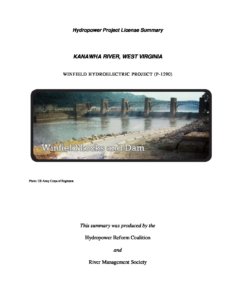Monthly Newsletter: Klamath Dam Removals: A Tale of the Power of Collaboration and Persistence

Klamath River Dam Removal, Daniel Nylen
A river basin once split in half for more than a century will be reconnected this fall with the completion of the nation’s largest dam removal and river restoration project. Over the past two years, four dams were removed from the Klamath River: J.C. Boyle in southern Oregon, and Copco No. 1, Copco No. 2, and Iron Gate in northern California. Built solely to generate hydropower, these dams exacted a high price on communities, Tribal nations, and the environment—a cost that is still felt today.
The Klamath and It’s People
Stretching 257 miles from Upper Klamath Lake in Oregon to the Pacific Ocean in California, the Klamath is California’s second-largest river and historically the third-largest salmon-producing river on the West Coast. Since the construction of Copco No. 1 began in 1911, followed by the completion of Copco No. 2 in 1925, J.C. Boyle in 1958, and Iron Gate in 1962, these dams have inundated 15 miles of river and blocked access to over 400 miles of habitat for salmon, steelhead trout, and other anadromous fish. The impact was not just ecological but cultural; the river’s decline mirrored the decline in health and livelihood of the Yurok, Karuk, Klamath, Hupa, Modoc, and Shasta tribes who relied on it.
The dams transformed the river from a dynamic, balanced ecosystem into a stagnant environment devoid of its natural rhythms. Water warmed in the reservoirs, delaying the fall runs of Chinook salmon and exposing them to stress and disease. Essential minerals and sediments that sustained aquatic life downstream were blocked from reaching these environments, while pollutants and cyanobacteria (blue-green algae) plagued the water. By 2018, conditions were so dire that the Yurok Tribe had to cancel its commercial fishery for the third consecutive year due to the salmon population plummeting to 5 percent of its historic average.

Tribal members hug as crews took down what was left of Iron Gate Dam on the Klamath River. Photo by Carlos Avila Gonzalez,
For Indigenous peoples, the loss of salmon is like losing a family member. The pain of that loss, both cultural and economic, has affected tribes for more than a century. This fall, as Chinook salmon return to their ancestral spawning grounds, the river will no longer run green with toxic algae. It will once again flow with cold, nutrient-rich water, bringing renewal to the basin and its people. The return of salmon to the upper Klamath River marks the beginning of a new ecological balance, one that tribal nations have fought tirelessly to restore.
It’s not only a story of revival, but also a story about the people and partnerships that made this restoration possible—a reminder of the power of collaboration and dedication to rivers.
The Beginning of the End
In the early 2000s, tribal nations in the Klamath basin began discussing the feasibility of removing dams on the river to restore their history, culture, and subsistence.
A tipping point occurred in 2002, when more than 65,000 salmon died in a catastrophic fish kill in the lower Klamath. Low river flows due to high irrigation demand in other parts of the watershed resulted in warm water temperatures. The unnatural conditions prompted the salmon to idle when they should have been migrating upriver, causing greater stress and infections by parasites to run rampant. An entire generation of fish was lost. Businesses were upended and a link to the Tribes’ ancestral past was severed.
Not long after this horrific event did people begin to wonder when the next fish kill might take place. It became overwhelmingly apparent that the time was now to make change. Community members learned that 4 dams upstream were owned by a private company and began to advocate for their removal. Eventually, leaders with different interests in the river, including those from many Tribal nations, the states of California and Oregon, nonprofits, and other entities, began to work together to repair the wrongdoings of the early dam owners, who never asked the Tribes for permission to build the blockades. What came out of these discussions was the signing of the Klamath Hydroelectric Settlement Agreement (KHSA), which outlined a plan to remove the four hydroelectric dams on the Klamath River. PacifiCorp, the company who owned the dams, worked with stakeholders on an agreement to remove the dams under terms that provide cost protections and certainty for customers in lieu of investing in expensive upgrades to comply with federal water quality and fish passage regulations. As the four dams didn’t provide flood control or irrigation and only generated a small amount of hydropower, the Public Utilities Commissions in Oregon and California concluded in 2008 that removing the dams—instead of spending more than $500 million to bring the dams up to modern standards—would save PacifiCorp customers more than $100 million. Restoring the river would improve water temperatures, increase the levels of dissolved oxygen in the water, reduce algae toxins, open up historic spawning habitat and bolstering healthy tribes and communities.

Finally, on November 17, 2022, the Federal Energy Regulatory Commission (FERC) approved the hydropower license surrender to remove the dams beginning with Copco 2, the smallest dam, in summer 2023. As part of the KHSA, the Klamath River Renewal Corporation (KRRC), a private, independent nonprofit, took ownership of the dams and was responsible for their removal and now the ongoing restoration efforts in and around the river and its tributaries.
A River Reborn
With the dams removed from the landscape, the KRRC has turned its focus to the monumental task of restoration. The former reservoir sites are already in the process of recovery, as crews have been working diligently to give nature a jump start. Over the past five years, Resource Environmental Solutions (RES), the contractor responsible for restoration, partnered with Yurok tribe members to hand-collect 13 million seeds from 98 native plant species, including culturally significant plants like poppy, fiddleneck, mountain penstemon, and native lupines. These species were chosen for their resilience and ability to grow from seed in propagation. The harvested seeds were then nurtured in nurseries, resulting in approximately 18 billion seeds.

Immediately after the impoundments were drawn down, Yurok tribe members began broadcasting the native seeds across the muddy, barren reservoir beds. With some help from helicopters, they dispersed 66,000 pounds of native plant seeds and 27,000 acorns, while also planting 72,000 root stock plants across 2,200 acres of land that was once underwater. Crews have been aggressive with their revegetation efforts to keep sediment in place and prevent it from washing downriver. While positive growth was seen during this initial seeding period, this was just the initial phase and crews will be back out again this fall amending soils and seeding again. As rounds of vegetation goes to seed, a natural cyclical seeding process will begin to take shape every fall to complement these ongoing efforts.
The project has been a massive win for Indigenous people, conservation organizations, and environmentalists. It illustrated the power of Indigenous voices and successful collaboration among unlikely groups. Four dams down, so many to go.


